Recent Advances in Technologies, Methods, and Economic Analysis for Sustainable Development of Energy, Water, and Environment Systems
Abstract
:1. Introduction
2. Application of Renewable Bioenergy
2.1. Waste to Wealth Techniques
2.2. Hybrid Bio-Energy Systems
3. Component Enhancement in Renewable Systems
3.1. Heat Exchangers in Renewable Systems
3.2. Other Components for Renewable Applications
4. Sustainable Development for Buildings
4.1. Energy Supply and Demand Analysis
4.2. Low-Temperature DHC System
5. Economic Analysis and Evaluation for Sustainability
5.1. Techno-Economic Assessment
5.2. Environmental Evaluation
6. Conclusions
Author Contributions
Funding
Conflicts of Interest
References
- Cirman, A.; Domadenik, P.; Koman, M.; Redek, T. The Kyoto protocol in a global perspective. Econ. Bus. Rev. 2009, 11, 3. [Google Scholar] [CrossRef]
- Zhang, Z.X. Greenhouse gas emission trading and the world trading system. J. World Trade 1998, 32, 219. [Google Scholar] [CrossRef]
- Tudor, C.; Sova, R. EU Net-Zero Policy Achievement Assessment in Selected Members through Automated Forecasting Algorithms. ISPRS Int. J. Geo Inf. 2022, 11, 232. [Google Scholar] [CrossRef]
- Feleki, E.; Moussiopoulos, N. Setting emission reduction trajectories in mediterranean cities with the use of science-based targets: The pathway towards climate neutrality and the ambitious european goals by 2050. Atmosphere 2021, 12, 1505. [Google Scholar] [CrossRef]
- Plan, R. Communication from the Commission to the European Parliament, the European Council, the Council, the European Economic and Social Committee and the Committee of the Regions; European Commission: Brussels, Belgium, 2018. [Google Scholar]
- Kuklinska, K.; Wolska, L.; Namiesnik, J. Air quality policy in the US and the EU–a review. Atmos. Pollut. Res. 2015, 6, 129–137. [Google Scholar] [CrossRef]
- Van Soest, H.L.; den Elzen, M.G.; van Vuuren, D.P. Net-zero emission targets for major emitting countries consistent with the Paris Agreement. Nat. Commun. 2021, 12, 2140. [Google Scholar] [CrossRef] [PubMed]
- Chu, W.; Calise, F.; Duić, N.; Østergaard, P.A.; Vicidomini, M.; Wang, Q. Recent advances in technology, strategy and application of sustainable energy systems. Energies 2020, 13, 5229. [Google Scholar] [CrossRef]
- Chu, W.; Vicidomini, M.; Calise, F.; Duić, N.; Østergaard, P.A.; Wang, Q.; da Graça Carvalho, M. Recent Advances in Low-Carbon and Sustainable, Efficient Technology: Strategies and Applications. Energies 2022, 15, 2954. [Google Scholar] [CrossRef]
- Benić, J.; Karlušić, J.; Šitum, Ž.; Cipek, M.; Pavković, D. Direct Driven Hydraulic System for Skidders. Energies 2022, 15, 2321. [Google Scholar] [CrossRef]
- Plata, V.; Ferreira-Beltrán, D.; Gauthier-Maradei, P. Effect of Cooking Conditions on Selected Properties of Biodiesel Produced from Palm-Based Waste Cooking Oils. Energies 2022, 15, 908. [Google Scholar] [CrossRef]
- Bartolucci, L.; Cordiner, S.; De Maina, E.; Mulone, V. Data-Driven Optimal Design of a CHP Plant for a Hospital Building: Highlights on the Role of Biogas and Energy Storages on the Performance. Energies 2022, 15, 858. [Google Scholar] [CrossRef]
- Moita, A.S.; Pontes, P.; Martins, L.; Coelho, M.; Carvalho, O.; Brito, F.; Moreira, A.L.N. Complex Fluid Flow in Microchannels and Heat Pipes with Enhanced Surfaces for Advanced Heat Conversion and Recovery Systems. Energies 2022, 15, 1478. [Google Scholar] [CrossRef]
- Fatigati, F.; Di Giovine, G.; Cipollone, R. Feasibility Assessment of a Dual Intake-Port Scroll Expander Operating in an ORC-Based Power Unit. Energies 2022, 15, 770. [Google Scholar] [CrossRef]
- Wołosz, K.J. Energy Analysis of an Industrial Nozzle with Variable Outlet Conditions during Compressible and Transient Airflow. Energies 2022, 15, 841. [Google Scholar] [CrossRef]
- Girgibo, N.; Mäkiranta, A.; Lü, X.; Hiltunen, E. Statistical investigation of climate change effects on the utilization of the sediment heat energy. Energies 2022, 15, 435. [Google Scholar] [CrossRef]
- Gustavsson, L.; Piccardo, C. Cost Optimized Building Energy Retrofit Measures and Primary Energy Savings under Different Retrofitting Materials, Economic Scenarios, and Energy Supply. Energies 2022, 15, 1009. [Google Scholar] [CrossRef]
- Vivian, J.; Chinello, M.; Zarrella, A.; De Carli, M. Investigation on Individual and Collective PV Self-Consumption for a Fifth Generation District Heating Network. Energies 2022, 15, 1022. [Google Scholar] [CrossRef]
- Ndiaye, A.; Locment, F.; De Bernardinis, A.; Sechilariu, M.; Redondo-Iglesias, E. A Techno-Economic Analysis of Energy Storage Components of Microgrids for Improving Energy Management Strategies. Energies 2022, 15, 1556. [Google Scholar] [CrossRef]
- Herrando, M.; Gómez, A.; Fueyo, N. Supporting Local Authorities to Plan Energy Efficiency in Public Buildings: From Local Needs to Regional Planning. Energies 2022, 15, 907. [Google Scholar] [CrossRef]
- Mori, M.; Gutiérrez, M.; Sekavčnik, M.; Drobnič, B. Modelling and environmental assessment of a stand-alone micro-grid system in a mountain hut using renewables. Energies 2021, 15, 202. [Google Scholar] [CrossRef]
- Spanodimitriou, Y.; Ciampi, G.; Scorpio, M.; Mokhtari, N.; Teimoorzadeh, A.; Laffi, R.; Sibilio, S. Passive Strategies for Building Retrofitting: Performances Analysis and Incentive Policies for the Iranian Scenario. Energies 2022, 15, 1628. [Google Scholar] [CrossRef]
- Hu, Z.; Wang, X.; Zhang, L.; Yang, S.; Ruan, R.; Bai, S.; Zhu, Y.; Wang, L.; Mikulčić, H.; Tan, H. Emission characteristics of particulate matters from a 30 MW biomass-fired power plant in China. Renew. Energy 2020, 155, 225–236. [Google Scholar] [CrossRef]
- Chai, Y.H.; Yusup, S.; Kadir, W.N.A.; Wong, C.Y.; Rosli, S.S.; Ruslan, M.S.H.; Chin, B.L.F.; Yiin, C.L. Valorization of tropical biomass waste by supercritical fluid extraction technology. Sustainability 2020, 13, 233. [Google Scholar] [CrossRef]
- Luz, F.C.; Cordiner, S.; Manni, A.; Mulone, V.; Rocco, V. Biomass fast pyrolysis in screw reactors: Prediction of spent coffee grounds bio-oil production through a monodimensional model. Energy Convers. Manag. 2018, 168, 98–106. [Google Scholar]
- Alrefai, A.M.; Alrefai, R.; Benyounis, K.Y.; Stokes, J. Impact of Starch from Cassava Peel on Biogas Produced through the Anaerobic Digestion Process. Energies 2020, 13, 2713. [Google Scholar] [CrossRef]
- Larrain, M.; Van Passel, S.; Thomassen, G.; Kresovic, U.; Alderweireldt, N.; Moerman, E.; Billen, P. Economic performance of pyrolysis of mixed plastic waste: Open-loop versus closed-loop recycling. J. Clean. Prod. 2020, 270, 122442. [Google Scholar] [CrossRef]
- Růžičková, J.; Raclavska, H.; Šafář, M.; Kucbel, M.; Raclavský, K.; Grobelak, A.; Švédová, B.; Juchelkova, D. The occurrence of pesticides and their residues in char produced by the combustion of wood pellets in domestic boilers. Fuel 2021, 293, 120452. [Google Scholar] [CrossRef]
- Doumax-Tagliavini, V.; Sarasa, C. Looking towards policies supporting biofuels and technological change: Evidence from France. Renew. Sustain. Energy Rev. 2018, 94, 430–439. [Google Scholar] [CrossRef]
- Esteves, E.M.; Brigagão, G.V.; Morgado, C.R. Multi-objective optimization of integrated crop-livestock system for biofuels production: A life-cycle approach. Renew. Sustain. Energy Rev. 2021, 152, 111671. [Google Scholar] [CrossRef]
- Mancusi, E.; Bareschino, P.; Brachi, P.; Coppola, A.; Ruoppolo, G.; Urciuolo, M.; Pepe, F. Feasibility of an integrated biomass-based CLC combustion and a renewable-energy-based methanol production systems. Renew. Energy 2021, 179, 29–36. [Google Scholar] [CrossRef]
- Kamizela, T.; Lyng, K.-A.; Saxegård, S.; Švédová, B.; Grobelak, A. Bionor sewage sludge technology–Biomass to fertiliser and a soil addition. J. Clean. Prod. 2021, 319, 128655. [Google Scholar] [CrossRef]
- Tomić, T.; Schneider, D.R. The role of energy from waste in circular economy and closing the loop concept–Energy analysis approach. Renew. Sustain. Energy Rev. 2018, 98, 268–287. [Google Scholar] [CrossRef]
- Carminati, H.B.; Raquel de Freitas, D.M.; de Medeiros, J.L.; Ofélia de Queiroz, F.A. Bioenergy and full carbon dioxide sinking in sugarcane-biorefinery with post-combustion capture and storage: Techno-economic feasibility. Appl. Energy 2019, 254, 113633. [Google Scholar] [CrossRef]
- Tesfamariam, E.H.; Malobane, E.M.; Cogger, C.G.; Mbakwe, I. The Nitrogen Fertilizer Value of Selected South African Biosolids as Affected by Drying Depth on Beds. J. Sustain. Dev. Energy Water Environ. Syst. 2021, 9, 1–12. [Google Scholar] [CrossRef]
- Cavaignac, R.S.; Ferreira, N.L.; Guardani, R. Techno-economic and environmental process evaluation of biogas upgrading via amine scrubbing. Renew. Energy 2021, 171, 868–880. [Google Scholar] [CrossRef]
- Vukasinovic, V.; Gordic, D.; Zivkovic, M.; Koncalovic, D.; Zivkovic, D. Long-term planning methodology for improving wood biomass utilization. Energy 2019, 175, 818–829. [Google Scholar] [CrossRef]
- Tabata, T.; Zhou, J.; Hoshikawa, J. Discussion on woody biomass energy systems and natural ecosystem impacts: Case study in Japan. Clean Technol. Environ. Policy 2021, 23, 765–778. [Google Scholar] [CrossRef]
- Hanslík, E.; Marešová, D.; Juranová, E.; Sedlářová, B. Comparison of balance of tritium activity in waste water from nuclear power plants and at selected monitoring sites in the Vltava River, Elbe River and Jihlava (Dyje) River catchments in the Czech Republic. J. Environ. Manag. 2017, 203, 1137–1142. [Google Scholar] [CrossRef]
- Tian, X.; You, F. Carbon-neutral hybrid energy systems with deep water source cooling, biomass heating, and geothermal heat and power. Appl. Energy 2019, 250, 413–432. [Google Scholar] [CrossRef]
- Sivri, I.; Yilmaz, H.; Cam, O.; Yilmaz, I. Combustion and emission characteristics of premixed biogas mixtures: An experimental study. Int. J. Hydrogen Energy 2022, 47, 12377–12392. [Google Scholar] [CrossRef]
- Meramo-Hurtado, S.I.; González-Delgado, Á.; Rehmann, L.; Quinones-Bolanos, E.; Mehvar, M. Comparative analysis of biorefinery designs based on acetone-butanol-ethanol fermentation under exergetic, techno-economic, and sensitivity analyses towards a sustainability perspective. J. Clean. Prod. 2021, 298, 126761. [Google Scholar] [CrossRef]
- Cirillo, D.; Di Palma, M.; La Villetta, M.; Macaluso, A.; Mauro, A.; Vanoli, L. A novel biomass gasification micro-cogeneration plant: Experimental and numerical analysis. Energy Convers. Manag. 2021, 243, 114349. [Google Scholar] [CrossRef]
- Bietresato, M.; Bolla, A.; Caligiuri, C.; Renzi, M.; Mazzetto, F. The kinematic viscosity of conventional and bio-based fuel blends as a key parameter to indirectly estimate the performance of compression-ignition engines for agricultural purposes. Fuel 2021, 298, 120817. [Google Scholar] [CrossRef]
- Manić, N.; Janković, B.; Stojiljković, D.; Radojević, M.; Somoza, B.C.; Medić, L. Self-ignition potential assessment for different biomass feedstocks based on the dynamic thermal analysis. Clean. Eng. Technol. 2021, 2, 100040. [Google Scholar] [CrossRef]
- Jia, B.; Tsau, J.-S.; Barati, R. A review of the current progress of CO2 injection EOR and carbon storage in shale oil reservoirs. Fuel 2019, 236, 404–427. [Google Scholar] [CrossRef]
- Jia, B.; Tsau, J.-S.; Barati, R. A workflow to estimate shale gas permeability variations during the production process. Fuel 2018, 220, 879–889. [Google Scholar] [CrossRef]
- Jia, B.; Tsau, J.-S.; Barati, R. Different flow behaviors of low-pressure and high-pressure carbon dioxide in shales. SPE J. 2018, 23, 1452–1468. [Google Scholar] [CrossRef]
- Jia, B.; Chen, Z.; Xian, C. Investigations of CO2 storage capacity and flow behavior in shale formation. J. Pet. Sci. Eng. 2022, 208, 109659. [Google Scholar] [CrossRef]
- Cui, W.; Cao, Z.; Li, X.; Lu, L.; Ma, T.; Wang, Q. Experimental investigation and artificial intelligent estimation of thermal conductivity of nanofluids with different nanoparticles shapes. Powder Technol. 2022, 398, 117078. [Google Scholar] [CrossRef]
- Ribó-Pérez, D.; Herraiz-Cañete, Á.; Alfonso-Solar, D.; Vargas-Salgado, C.; Gómez-Navarro, T. Modelling biomass gasifiers in hybrid renewable energy microgrids; a complete procedure for enabling gasifiers simulation in HOMER. Renew. Energy 2021, 174, 501–512. [Google Scholar] [CrossRef]
- San Juan, J.; Sy, C. Multi-Objective Target-Oriented Robust Optimization of Biomass Co-Firing Networks Under Quality Uncertainty. J. Sustain. Dev. Energy Water Environ. Syst. 2021, 9, 1–26. [Google Scholar] [CrossRef]
- Bedoić, R.; Dorotić, H.; Schneider, D.R.; Čuček, L.; Ćosić, B.; Pukšec, T.; Duić, N. Synergy between feedstock gate fee and power-to-gas: An energy and economic analysis of renewable methane production in a biogas plant. Renew. Energy 2021, 173, 12–23. [Google Scholar] [CrossRef]
- Rinaldi, F.; Moghaddampoor, F.; Najafi, B.; Marchesi, R. Economic feasibility analysis and optimization of hybrid renewable energy systems for rural electrification in Peru. Clean Technol. Environ. Policy 2021, 23, 731–748. [Google Scholar] [CrossRef]
- Rosso-Cerón, A.; León-Cardona, D.; Kafarov, V. Soft computing tool for aiding the integration of hybrid sustainable renewable energy systems, case of Putumayo, Colombia. Renew. Energy 2021, 174, 616–634. [Google Scholar] [CrossRef]
- Carminati, H.B.; de Medeiros, J.L.; Ofélia de Queiroz, F.A. Sustainable Gas-to-Wire via dry reforming of carbonated natural gas: Ionic-liquid pre-combustion capture and thermodynamic efficiency. Renew. Sustain. Energy Rev. 2021, 151, 111534. [Google Scholar] [CrossRef]
- Borjigin, S.; Zhang, S.; Ma, T.; Zeng, M.; Wang, Q. Performance enhancement of cabinet cooling system by utilizing cross-flow plate heat exchanger. Energy Convers. Manag. 2020, 213, 112854. [Google Scholar] [CrossRef]
- Guo, Z.; Yang, J.; Tan, Z.; Tian, X.; Wang, Q. Numerical study on gravity-driven granular flow around tube out-wall: Effect of tube inclination on the heat transfer. Int. J. Heat Mass Transf. 2021, 174, 121296. [Google Scholar] [CrossRef]
- Holik, M.; Živić, M.; Virag, Z.; Barac, A.; Vujanović, M.; Avsec, J. Thermo-economic optimization of a Rankine cycle used for waste-heat recovery in biogas cogeneration plants. Energy Convers. Manag. 2021, 232, 113897. [Google Scholar] [CrossRef]
- Tian, X.; Guo, Z.; Jia, H.; Yang, J.; Wang, Q. Numerical investigation of a new type tube for shell-and-tube moving packed bed heat exchanger. Powder Technol. 2021, 394, 584–596. [Google Scholar] [CrossRef]
- Lian, J.; Xu, D.; Chang, H.; Xu, Z.; Lu, X.; Wang, Q.; Ma, T. Thermal and mechanical performance of a hybrid printed circuit heat exchanger used for supercritical carbon dioxide Brayton cycle. Energy Convers. Manag. 2021, 245, 114573. [Google Scholar] [CrossRef]
- Ma, T.; Zhang, P.; Deng, T.; Ke, H.; Lin, Y.; Wang, Q. Thermal-hydraulic characteristics of printed circuit heat exchanger used for floating natural gas liquefaction. Renew. Sustain. Energy Rev. 2021, 137, 110606. [Google Scholar] [CrossRef]
- Zheng, D.; Yang, J.; Wang, J.; Kabelac, S.; Sundén, B. Analyses of thermal performance and pressure drop in a plate heat exchanger filled with ferrofluids under a magnetic field. Fuel 2021, 293, 120432. [Google Scholar] [CrossRef]
- Li, N.; Wang, J.; Klemeš, J.J.; Wang, Q.; Varbanov, P.S.; Yang, W.; Liu, X.; Zeng, M. A target-evaluation method for heat exchanger network optimisation with heat transfer enhancement. Energy Convers. Manag. 2021, 238, 114154. [Google Scholar] [CrossRef]
- Chin, H.H.; Wang, B.; Varbanov, P.S.; Klemeš, J.J.; Zeng, M.; Wang, Q.-W. Long-term investment and maintenance planning for heat exchanger network retrofit. Appl. Energy 2020, 279, 115713. [Google Scholar] [CrossRef]
- Zirngast, K.; Kravanja, Z.; Pintarič, Z.N. An improved algorithm for synthesis of heat exchanger network with a large number of uncertain parameters. Energy 2021, 233, 121199. [Google Scholar] [CrossRef]
- Pavičević, M.; Novosel, T.; Pukšec, T.; Duić, N. Hourly optimization and sizing of district heating systems considering building refurbishment–Case study for the city of Zagreb. Energy 2017, 137, 1264–1276. [Google Scholar] [CrossRef]
- Manno, D.; Cipriani, G.; Ciulla, G.; Di Dio, V.; Guarino, S.; Brano, V.L. Deep learning strategies for automatic fault diagnosis in photovoltaic systems by thermographic images. Energy Convers. Manag. 2021, 241, 114315. [Google Scholar] [CrossRef]
- Chang, H.; Lian, J.; Ma, T.; Li, L.; Wang, Q. Design and optimization of an annular air-hydrogen precooler for advanced space launchers engines. Energy Convers. Manag. 2021, 241, 114279. [Google Scholar] [CrossRef]
- Ancona, M.; Bianchi, M.; Branchini, L.; Catena, F.; De Pascale, A.; Melino, F.; Peretto, A. Numerical prediction of off-design performance for a Power-to-Gas system coupled with renewables. Energy Convers. Manag. 2020, 210, 112702. [Google Scholar] [CrossRef]
- Takruri, M.; Farhat, M.; Sunil, S.; Ramos-Hernanz, J.A.; Barambones, O. Support vector machine for photovoltaic system efficiency improvement. J. Sustain. Dev. Energy Water Environ. Syst. 2020, 8, 441–451. [Google Scholar] [CrossRef]
- Huang, K.; Su, B.; Li, T.; Ke, H.; Lin, M.; Wang, Q. Numerical simulation of the mixing behaviour of hot and cold fluids in the rectangular T-junction with/without an impeller. Appl. Therm. Eng. 2022, 204, 117942. [Google Scholar] [CrossRef]
- Ahmad Fadzil, A.F.; Wan Alwi, S.R.; Abdul Manan, Z.; Klemeš, J.J. Study on Impacts of Multiple Centralised Water Reuse Header fromConsumer and Operator Perspectives. J. Sustain. Dev. Energy Water Environ. Syst. 2020, 8, 754–765. [Google Scholar] [CrossRef]
- Tien, P.W.; Wei, S.; Liu, T.; Calautit, J.; Darkwa, J.; Wood, C. A deep learning approach towards the detection and recognition of opening of windows for effective management of building ventilation heat losses and reducing space heating demand. Renew. Energy 2021, 177, 603–625. [Google Scholar] [CrossRef]
- Roumi, S.; Stewart, R.; Karkoodi, S.; Parvin, M. Analysis of Optimal Energy Supply in the Commercial Buildings: A Herpetarium. J. Sustain. Dev. Energy Water Environ. Syst. 2022, 10, 398630. [Google Scholar] [CrossRef]
- Żołądek, M.; Figaj, R.; Sornek, K. Energy analysis of a micro-scale biomass cogeneration system. Energy Convers. Manag. 2021, 236, 114079. [Google Scholar] [CrossRef]
- Quaggiotto, D.; Vivian, J.; Zarrella, A. Management of a district heating network using model predictive control with and without thermal storage. Optim. Eng. 2021, 22, 1897–1919. [Google Scholar] [CrossRef]
- Pursiheimo, E.; Rämä, M. Optimal capacities of distributed renewable heat supply in a residential area connected to district heating. J. Sustain. Dev. Energy Water Environ. Syst. 2021, 9, 10. [Google Scholar] [CrossRef]
- Guillén-Lambea, S.; Carvalho, M.; Delgado, M.; Lazaro, A. Sustainable enhancement of district heating and cooling configurations by combining thermal energy storage and life cycle assessment. Clean Technol. Environ. Policy 2021, 23, 857–867. [Google Scholar] [CrossRef]
- Živković, M.; Ivezić, D. Utilizing sewage wastewater heat in district heating systems in Serbia: Effects on sustainability. Clean Technol. Environ. Policy 2022, 24, 579–593. [Google Scholar] [CrossRef]
- Meha, D.; Thakur, J.; Novosel, T.; Pukšec, T.; Duić, N. A novel spatial–temporal space heating and hot water demand method for expansion analysis of district heating systems. Energy Convers. Manag. 2021, 234, 113986. [Google Scholar] [CrossRef]
- Tootkaboni, M.P.; Ballarini, I.; Corrado, V. Analysing the future energy performance of residential buildings in the most populated Italian climatic zone: A study of climate change impacts. Energy Rep. 2021, 7, 8548–8560. [Google Scholar] [CrossRef]
- Figaj, R. Performance assessment of a renewable micro-scale trigeneration system based on biomass steam cycle, wind turbine, photovoltaic field. Renew. Energy 2021, 177, 193–208. [Google Scholar] [CrossRef]
- Allen, A.; Henze, G.; Baker, K.; Pavlak, G. Evaluation of low-exergy heating and cooling systems and topology optimization for deep energy savings at the urban district level. Energy Convers. Manag. 2020, 222, 113106. [Google Scholar] [CrossRef]
- Varga, Z.; Palotai, B. Comparison of low temperature waste heat recovery methods. Energy 2017, 137, 1286–1292. [Google Scholar] [CrossRef]
- Simeoni, P.; Ciotti, G.; Cottes, M.; Meneghetti, A. Integrating industrial waste heat recovery into sustainable smart energy systems. Energy 2019, 175, 941–951. [Google Scholar] [CrossRef]
- Kočí, J.; Kočí, V.; Maděra, J.; Černý, R. Effect of applied weather data sets in simulation of building energy demands: Comparison of design years with recent weather data. Renew. Sustain. Energy Rev. 2019, 100, 22–32. [Google Scholar] [CrossRef]
- von Rhein, J.; Henze, G.P.; Long, N.; Fu, Y. Development of a topology analysis tool for fifth-generation district heating and cooling networks. Energy Convers. Manag. 2019, 196, 705–716. [Google Scholar] [CrossRef]
- Bilardo, M.; Sandrone, F.; Zanzottera, G.; Fabrizio, E. Modelling a fifth-generation bidirectional low temperature district heating and cooling (5GDHC) network for nearly Zero Energy District (nZED). Energy Rep. 2021, 7, 8390–8405. [Google Scholar] [CrossRef]
- Calixto, S.; Cozzini, M.; Manzolini, G. Modelling of an existing neutral temperature district heating network: Detailed and approximate approaches. Energies 2021, 14, 379. [Google Scholar] [CrossRef]
- Hiltunen, P.; Syri, S. Low-temperature waste heat enabling abandoning coal in Espoo district heating system. Energy 2021, 231, 120916. [Google Scholar] [CrossRef]
- Kilkis, B. An exergy-based minimum carbon footprint model for optimum equipment oversizing and temperature peaking in low-temperature district heating systems. Energy 2021, 236, 121339. [Google Scholar] [CrossRef]
- Matak, N.; Tomić, T.; Schneider, D.R.; Krajačić, G. Integration of WtE and district cooling in existing Gas-CHP based district heating system–Central European city perspective. Smart Energy 2021, 4, 100043. [Google Scholar] [CrossRef]
- Caputo, P.; Ferla, G.; Ferrari, S. Evaluation of environmental and energy effects of biomass district heating by a wide survey based on operational conditions in Italy. Energy 2019, 174, 1210–1218. [Google Scholar] [CrossRef]
- Weiler, V.; Stave, J.; Eicker, U. Renewable energy generation scenarios using 3D urban modeling tools—Methodology for heat pump and co-generation systems with case study application. Energies 2019, 12, 403. [Google Scholar] [CrossRef]
- Somogyi, V.; Sebestyén, V.; Domokos, E. Assessment of wastewater heat potential for district heating in Hungary. Energy 2018, 163, 712–721. [Google Scholar] [CrossRef]
- Ten Caat, N.; Graamans, L.; Tenpierik, M.; van den Dobbelsteen, A. Towards fossil free cities—A supermarket, greenhouse & dwelling integrated energy system as an alternative to district heating: Amsterdam case study. Energies 2021, 14, 347. [Google Scholar]
- Restrepo-Valencia, S.; Walter, A. Techno-economic assessment of bio-energy with carbon capture and storage systems in a typical sugarcane mill in Brazil. Energies 2019, 12, 1129. [Google Scholar] [CrossRef]
- Kuczyński, S.; Łaciak, M.; Olijnyk, A.; Szurlej, A.; Włodek, T. Techno-economic assessment of turboexpander application at natural gas regulation stations. Energies 2019, 12, 755. [Google Scholar] [CrossRef]
- Moser, M.; Pecchi, M.; Fend, T. Techno-economic assessment of solar hydrogen production by means of thermo-chemical cycles. Energies 2019, 12, 352. [Google Scholar] [CrossRef]
- Manfren, M.; Nastasi, B.; Tronchin, L.; Groppi, D.; Garcia, D.A. Techno-economic analysis and energy modelling as a key enablers for smart energy services and technologies in buildings. Renew. Sustain. Energy Rev. 2021, 150, 111490. [Google Scholar] [CrossRef]
- Horvat, I.; Grubišić, D.; Marušić, A.; Lončar, D. Operation Strategies of a Solar Trigeneration Plant in a Residential Building. J. Sustain. Dev. Energy Water Environ. Syst. 2021, 9, 1–13. [Google Scholar] [CrossRef]
- Lamagna, M.; Nastasi, B.; Groppi, D.; Rozain, C.; Manfren, M.; Garcia, D.A. Techno-economic assessment of reversible Solid Oxide Cell integration to renewable energy systems at building and district scale. Energy Convers. Manag. 2021, 235, 113993. [Google Scholar] [CrossRef]
- Boyle, J.; Littler, T.; Foley, A. Battery energy storage system state-of-charge management to ensure availability of frequency regulating services from wind farms. Renew. Energy 2020, 160, 1119–1135. [Google Scholar] [CrossRef]
- Dorotić, H.; Pukšec, T.; Duić, N. Economical, environmental and exergetic multi-objective optimization of district heating systems on hourly level for a whole year. Appl. Energy 2019, 251, 113394. [Google Scholar] [CrossRef]
- Salvia, M.; Simoes, S.G.; Herrando, M.; Čavar, M.; Cosmi, C.; Pietrapertosa, F.; Gouveia, J.P.; Fueyo, N.; Gómez, A.; Papadopoulou, K. Improving policy making and strategic planning competencies of public authorities in the energy management of municipal public buildings: The PrioritEE toolbox and its application in five mediterranean areas. Renew. Sustain. Energy Rev. 2021, 135, 110106. [Google Scholar] [CrossRef]
- Marczinkowski, H.M.; Østergaard, P.A. Evaluation of electricity storage versus thermal storage as part of two different energy planning approaches for the islands Samsø and Orkney. Energy 2019, 175, 505–514. [Google Scholar] [CrossRef]
- Cipek, M.; Pavković, D.; Kljaić, Z.; Mlinarić, T.J. Assessment of battery-hybrid diesel-electric locomotive fuel savings and emission reduction potentials based on a realistic mountainous rail route. Energy 2019, 173, 1154–1171. [Google Scholar] [CrossRef]
- Segurado, R.; Costa, M.; Duić, N.; Carvalho, M.G. Integrated analysis of energy and water supply in islands. Case study of S. Vicente, Cape Verde. Energy 2015, 92, 639–648. [Google Scholar] [CrossRef]
- Calise, F.; Macaluso, A.; Piacentino, A.; Vanoli, L. A novel hybrid polygeneration system supplying energy and desalinated water by renewable sources in Pantelleria Island. Energy 2017, 137, 1086–1106. [Google Scholar] [CrossRef]
- Dorotić, H.; Doračić, B.; Dobravec, V.; Pukšec, T.; Krajačić, G.; Duić, N. Integration of transport and energy sectors in island communities with 100% intermittent renewable energy sources. Renew. Sustain. Energy Rev. 2019, 99, 109–124. [Google Scholar] [CrossRef]
- Calise, F.; d’Accadia, M.D.; Piacentino, A. Exergetic and exergoeconomic analysis of a renewable polygeneration system and viability study for small isolated communities. Energy 2015, 92, 290–307. [Google Scholar] [CrossRef]
- Allesina, G.; Ferrari, C.; Muscio, A.; Pedrazzi, S. Easy to implement ventilated sunspace for energy retrofit of condominium buildings with balconies. Renew. Energy 2019, 141, 541–548. [Google Scholar] [CrossRef]
- Bottino-Leone, D.; Larcher, M.; Herrera-Avellanosa, D.; Haas, F.; Troi, A. Evaluation of natural-based internal insulation systems in historic buildings through a holistic approach. Energy 2019, 181, 521–531. [Google Scholar] [CrossRef]
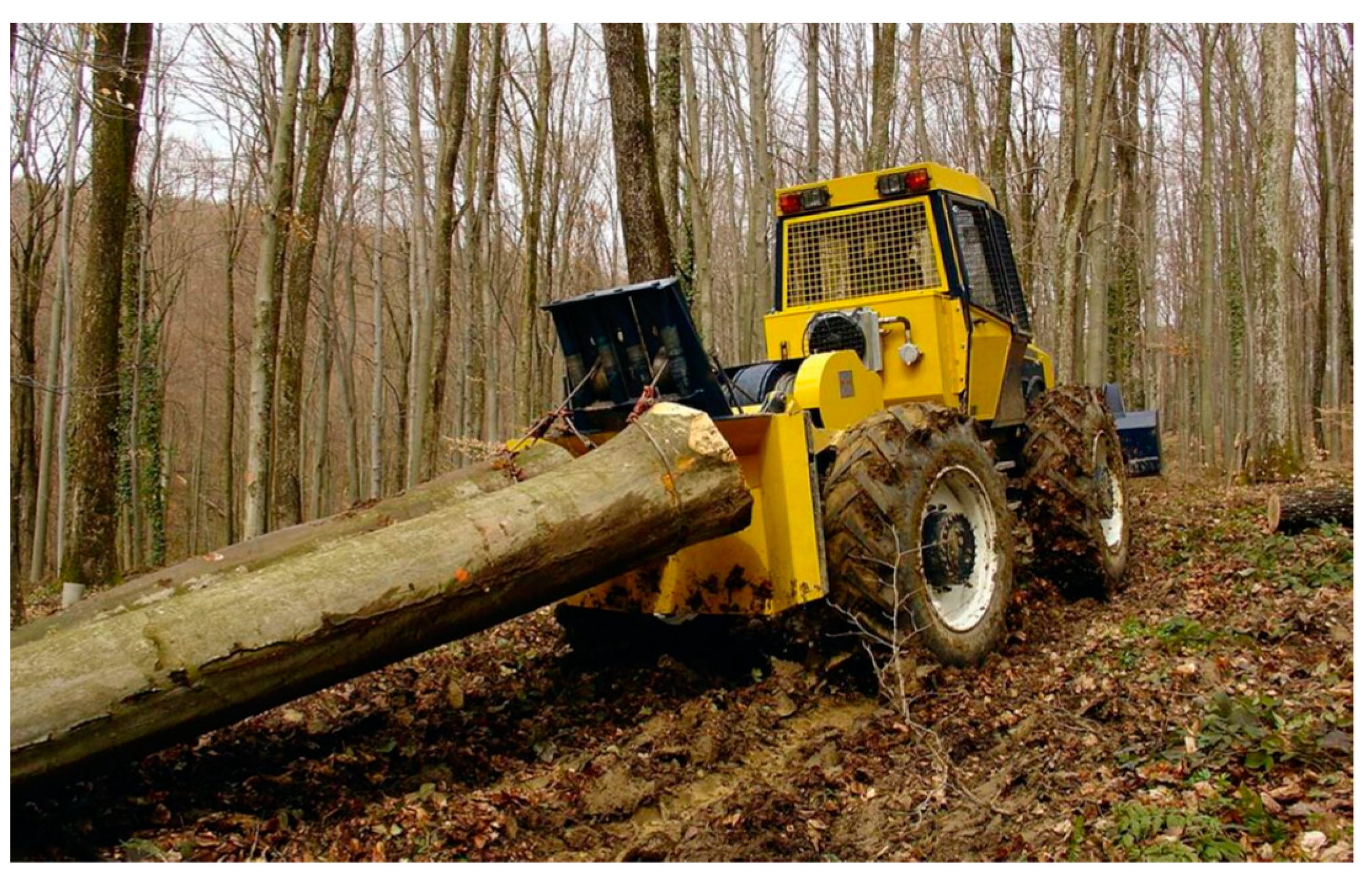


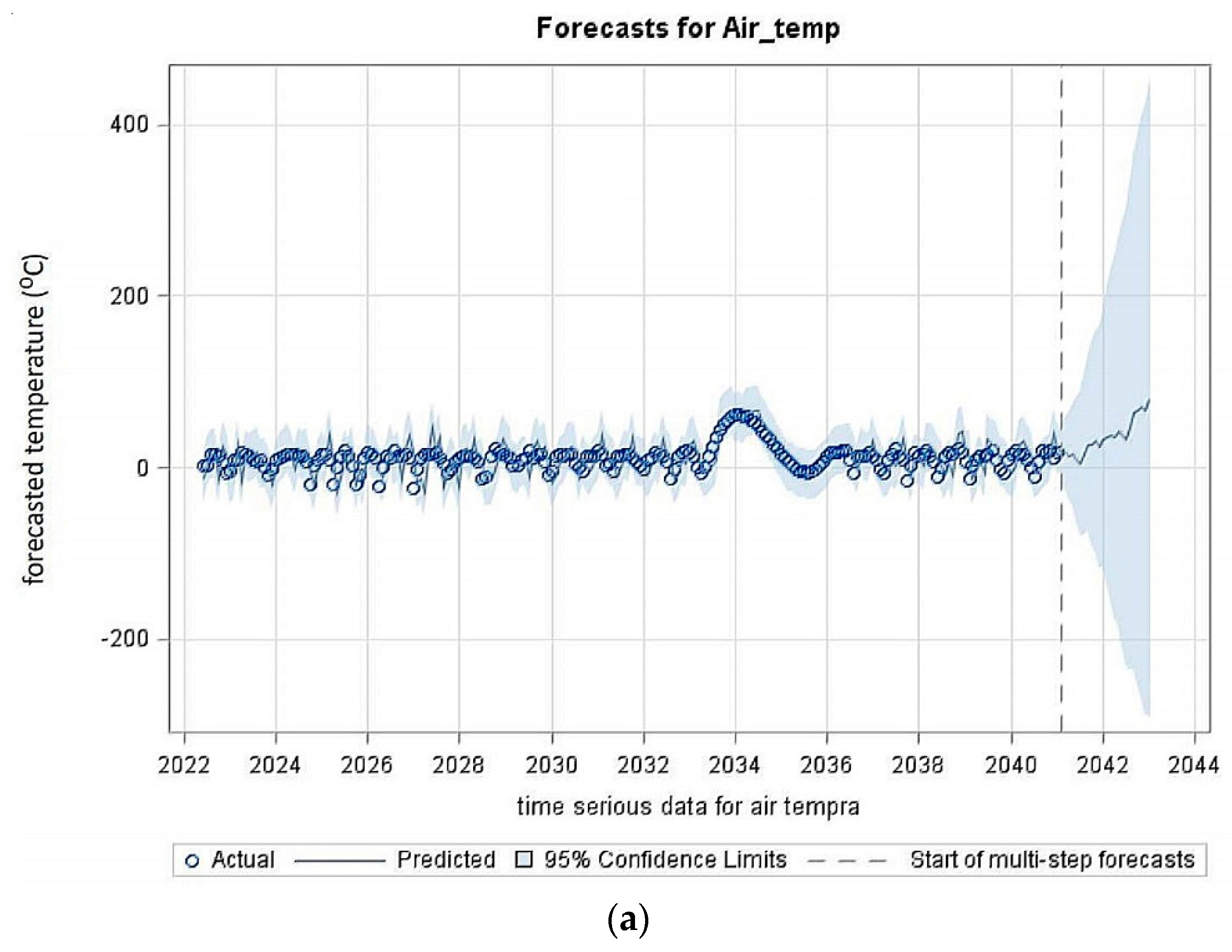

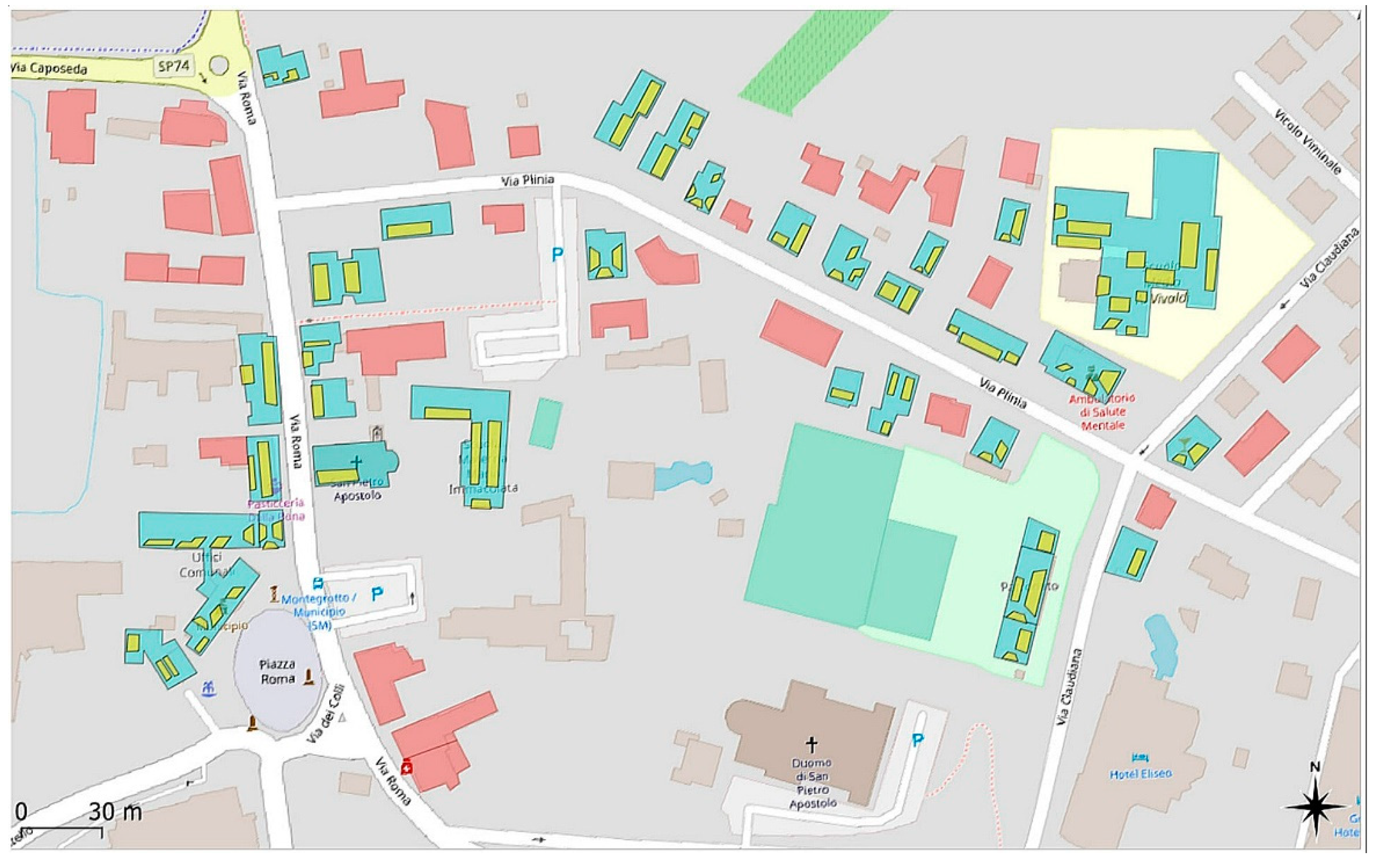
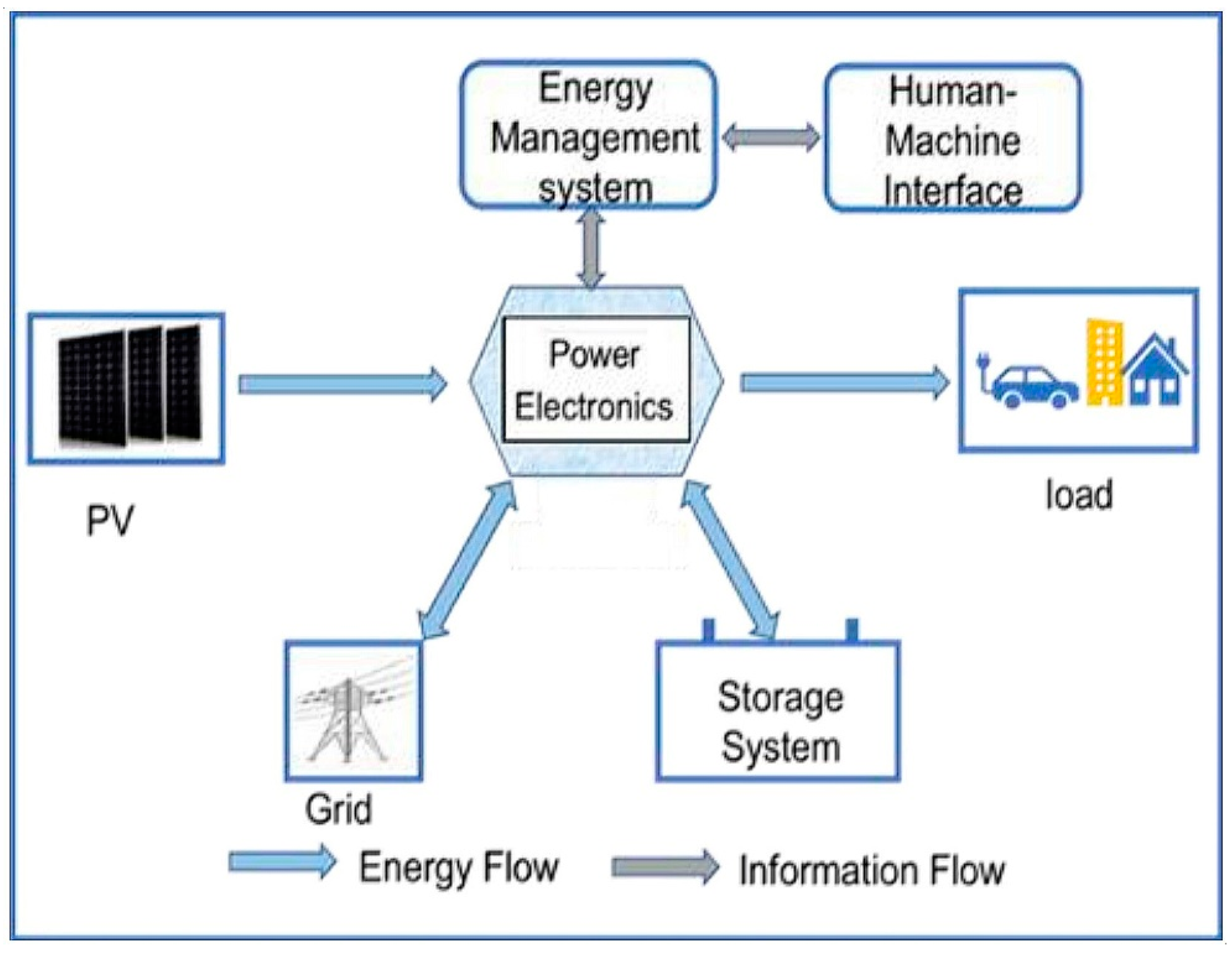
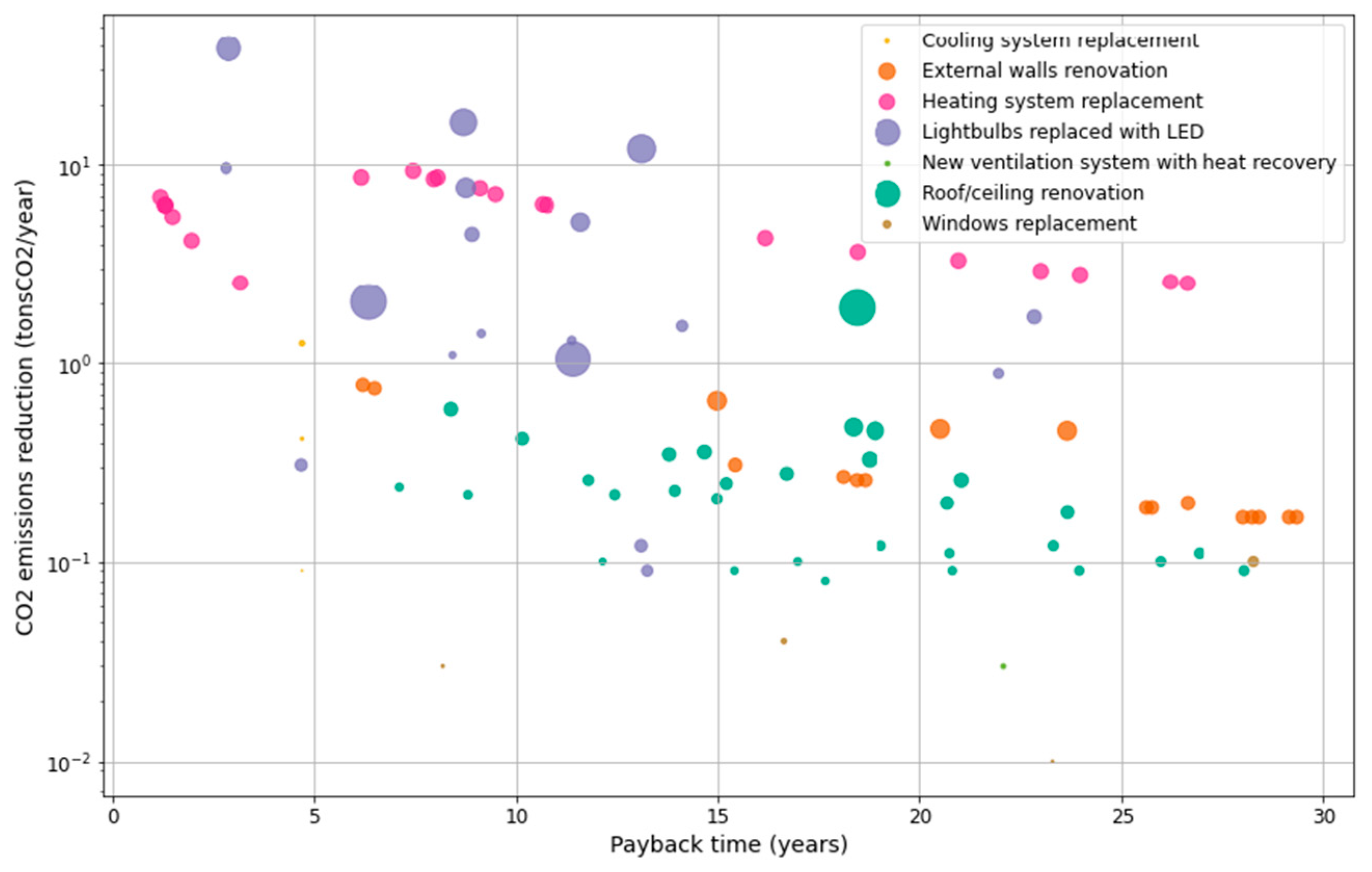
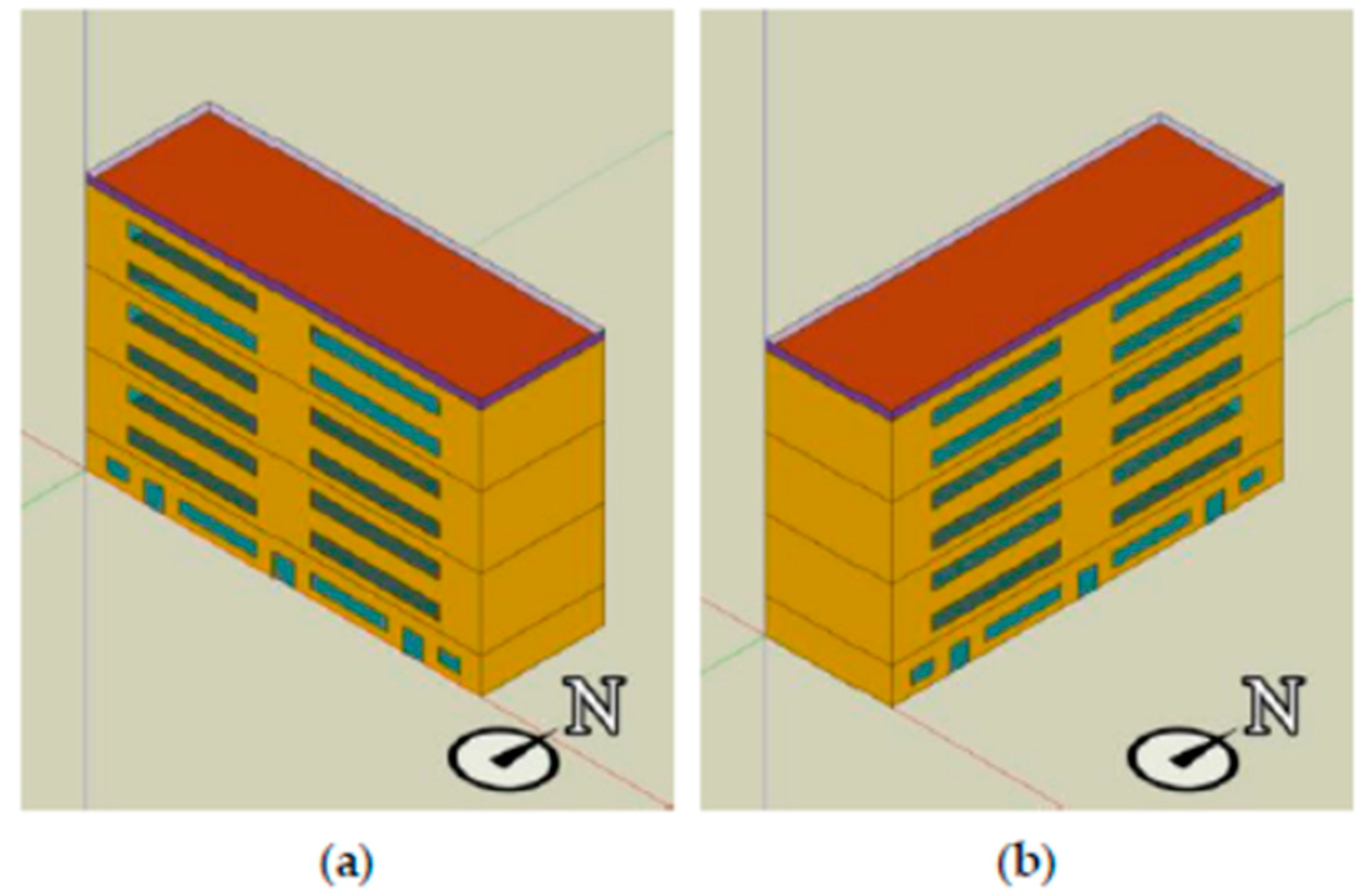
| Ein (kJ) | Fuel Consumption (L) | Lowing/Lifting Cycles per Day | Workdays per Year | Fuel Price (EUR) | |
|---|---|---|---|---|---|
| Classical system | 80 | 0.0056 | 54 | 250 | 105.84 |
| Direct driven electro-hydraulic system | 16.2 | 0.0011 | 20.79 |
| Scenario | S1 | S2 | S3 | S4 |
|---|---|---|---|---|
| Buildings in the REC | 32 | 32 | 61 | 61 |
| PV plants (-) | 32 | 9 | 32 | 9 |
| PV power (kW) | 422 | 200 | 422 | 200 |
| Description | Unit | SOPB | MEAS | SOPE | SOPE+ | SOPE × 2 | RES |
|---|---|---|---|---|---|---|---|
| Total consumption | kWh | 8105 | 7842 | 8105 | 8105 | 8105 | 8105 |
| Generator output | kWh | 8284 | 4913 | 5064 | 3348 | 638 | 0 |
| Total fuel consumption, Single phase | L | 3408 | 2021 | 2083 | 1378 | 262 | 0 |
| Nominal photovoltaic power | kW | 0.5 | 3.7 | 3.7 | 3.7 | 7.4 | 11.1 |
| Available solar energy | kWh | 791 | - | 5852 | 5852 | 11,704 | 17,556 |
| Battery capacity | kWh | 38.4 | 38.4 | 38.4 | 38.4 | 76.8 | 192 |
| Excess energy | kWh | 0 | - | 1734 | 59 | 2996 | 7941 |
| Renewable penetration | % | 8.7 | - | 44.9 | 63.4 | 93.2 | 100 |
Publisher’s Note: MDPI stays neutral with regard to jurisdictional claims in published maps and institutional affiliations. |
© 2022 by the authors. Licensee MDPI, Basel, Switzerland. This article is an open access article distributed under the terms and conditions of the Creative Commons Attribution (CC BY) license (https://creativecommons.org/licenses/by/4.0/).
Share and Cite
Chu, W.; Vicidomini, M.; Calise, F.; Duić, N.; Østergaard, P.A.; Wang, Q.; da Graça Carvalho, M. Recent Advances in Technologies, Methods, and Economic Analysis for Sustainable Development of Energy, Water, and Environment Systems. Energies 2022, 15, 7129. https://doi.org/10.3390/en15197129
Chu W, Vicidomini M, Calise F, Duić N, Østergaard PA, Wang Q, da Graça Carvalho M. Recent Advances in Technologies, Methods, and Economic Analysis for Sustainable Development of Energy, Water, and Environment Systems. Energies. 2022; 15(19):7129. https://doi.org/10.3390/en15197129
Chicago/Turabian StyleChu, Wenxiao, Maria Vicidomini, Francesco Calise, Neven Duić, Poul Alborg Østergaard, Qiuwang Wang, and Maria da Graça Carvalho. 2022. "Recent Advances in Technologies, Methods, and Economic Analysis for Sustainable Development of Energy, Water, and Environment Systems" Energies 15, no. 19: 7129. https://doi.org/10.3390/en15197129
APA StyleChu, W., Vicidomini, M., Calise, F., Duić, N., Østergaard, P. A., Wang, Q., & da Graça Carvalho, M. (2022). Recent Advances in Technologies, Methods, and Economic Analysis for Sustainable Development of Energy, Water, and Environment Systems. Energies, 15(19), 7129. https://doi.org/10.3390/en15197129












